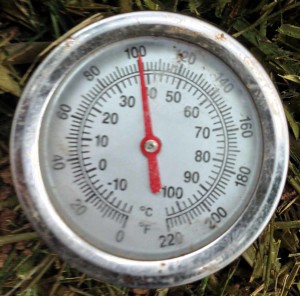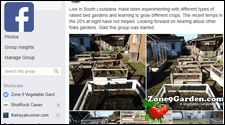Last time we talked about building a proper compost pile, noting that if it’s piled correctly, it will cook correctly and produce wonderful crumbles to dig in or mulch your Zone 9 vegetables, flowers, landscape plants and trees.
The best dimensions for your compost pile are 3x3x3 feet. Be sure to feed your pile with all your produce scraps, egg shells, tea bags, coffee grounds and yard waste. It’s best to poke your chopped or shredded scraps into little holes and cover them back up. Then they can start baking with the rest of your compost.
Once you are piling it at a ratio of 80 percent brown material and 20 percent green/produce scraps, and once you are keeping it watered to the consistency of a wet sponge, you’ll see the temperature of your pile go up, up, up.
 Temperature is very important. Maintaining a temp in the range of 90 to 140F allows your basic components to cook and break down. You can always get obsessive and use a compost thermometer (about $30), which is like a really tall meat thermometer. You poke it halfway down and read the temp on the top.
Temperature is very important. Maintaining a temp in the range of 90 to 140F allows your basic components to cook and break down. You can always get obsessive and use a compost thermometer (about $30), which is like a really tall meat thermometer. You poke it halfway down and read the temp on the top.
Once you are maintaining your compost pile, you could be getting finished compost at the bottom in a month or two. I’d love to tell you that I follow these guidelines to the letter. But the fact is that I’m not very consistent. I’ll be obsessive about my compost and put a lot of work into it, then forget about it and go on to more interesting tasks involving getting dirt under my fingernails. Hopefully I’m not the only one who does this.
But whether you obsess or not, it’s important to realize that while there are many variations on composting, this is the best way according to my county’s Master Gardeners. And I no longer second-guess the Master Gardeners. They have much too much expertise for me to put it to waste.


